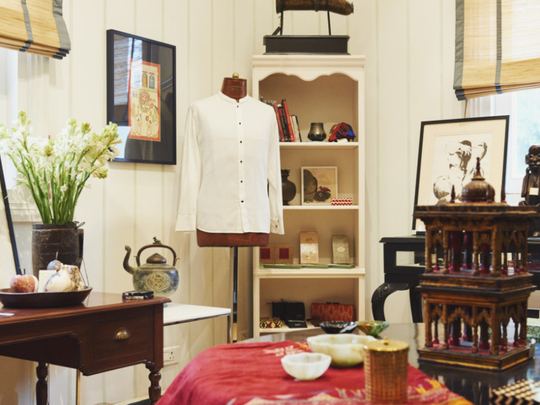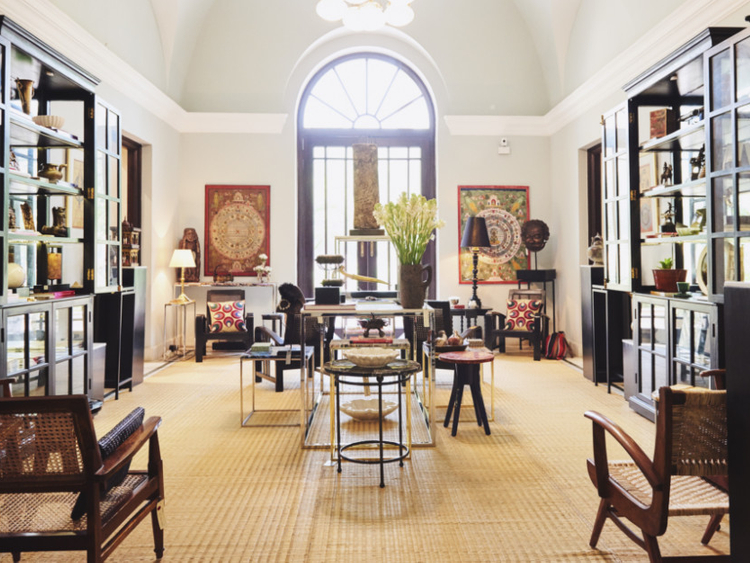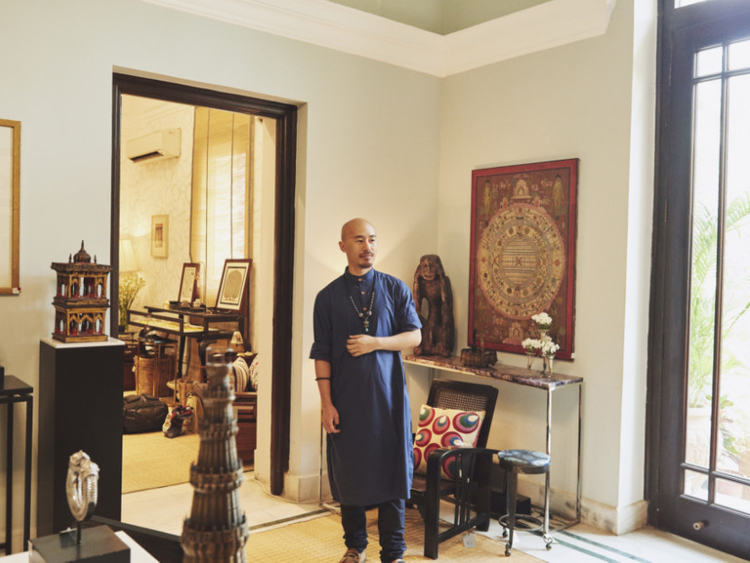
New Delhi: Mute testament to the vanity of greatness, the once-resplendent city “bungalow” of the maharajas of Bikaner stood forlorn for decades, a sad old heap at the centre of this city.
After India’s independence and the abolition in the 1970s of the last vestiges of the princely feudal system, Bikaner House was vacated by its noble tenants and put to civic use.
Unlike other similar palaces — the poetic pink sandstone Jaipur House, say, now the National Gallery of Modern Art — Bikaner House met a drearier fate as government offices and a bus depot.
So it remained until Vasundhara Raje, the first female chief minister of Rajasthan — the storied desert state in the country’s northwest — petitioned the courts to move agencies like the National Tiger Conservation Authority elsewhere.
She then set about transforming the vast pile set behind walls, just a short distance from the monumental India Gate, into a cultural centre, one replete with gallery spaces, a place for concert halls and a proposed new restaurant.
Future of retail
Here you can also find Vayu, a new, world-class store that hints at the future of retailing in India.
To comprehend how welcome Vayu (named for the Hindu deity of wind) is in the context of this sprawling and booming city, it probably helps to visualise a retail scene that has been dominated by high-end shopping complexes resembling dusty markets or the massive, Western-style malls that have metastasised like a glass-walled blight.
High-ceilinged and serene amid the tumult of New Delhi, Vayu comprises a series of whitewashed chambers on the ground floor of Bikaner House.
The store is the brainchild of Vivek Sahni, a seasoned design entrepreneur, and Dave Chang, a partner of Sahni’s in Kama, a wildly successful Ayurvedic treatment line, and it came about almost by happenstance.
“The government had been offering the space for a store, and nobody expressed interest,” Sahni said in the upscale Sunder Nagar area of New Delhi, adding that a former bus stop was not a promising prospect for a retail establishment.
“Finally, I tendered for it and got it, and then realised that we’re not shopkeepers. We’re an Ayurveda company. I wasn’t really sure what to do with it.”
The solution came quickly enough. Chang, a designer of Chinese-Indian ancestry and raised in the West Indies, drew on some famous cloud-covered chambers in the Bikaner palace to create the airy rooms that the Brown Paper Bag blog called a “much more interesting bohemian trustafarian’s residence.”
To complete the rooms, Chang designed slick brass and stone occasional furniture and glass-sided vitrines, and covered the floor with reed matting. Then he handed the space off to Sahni.
Sahni has stocked the store with brass devotional objects, tantric diagrams, books, amethyst bowls, refurbished midcentury furniture, antique brass boxes and toys from the Indian state of Orissa, custom-made lacquer Cambodian lamps and a selection of fine objects made by the traditional craftspeople vanishing from the scene in this rapidly modernising nation of 1.26 billion.
“It had to be Indian things, things that were naturally made, and not synthetic,” Sahni said.
“And we didn’t want to make things overpriced.”
Adding clothes from established designers such as Abraham & Thakore (celebrated in India and too-little known beyond its borders) as well as from newer labels like White Champa, the Udaipur-based Aavaran and Lacquer Embassy, Sahni and Change have created an intimate store unlike any this visitor has encountered over two decades of travelling to India.
“We wanted it to feel like you’re entering a house,” Sahni said. “The idea was to be slightly intimate, but not so cluttered up that you can’t react to the objects, the colours, the designs, and to find things pleasing both to your eye and your other senses.”
—New York Times News Service













